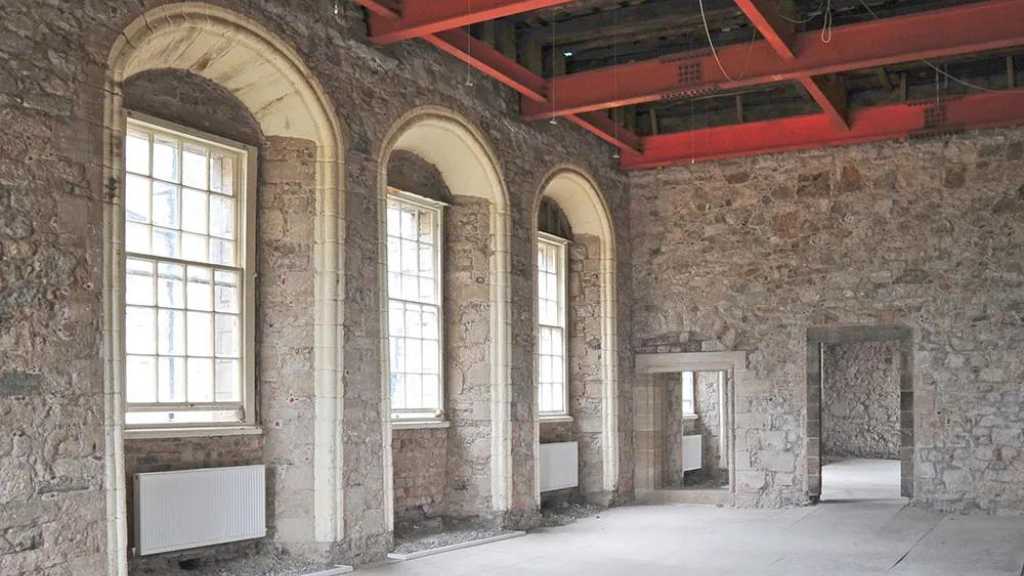Call Us: 0118 946 9146 | Email Us: info@ecohousestore.co.uk
Call Us: 0118 946 9146 | Email Us: info@ecohousestore.co.uk

Hydraulic limes are set through a process called hydrolysis. Hydrolysis is a chemical reaction whereby a water molecule breaks down one or more chemical bonds. Hydraulic lime is made from impure limestone containing silica and alumina. It provides a speedy initial set when compared with its non-hydraulic counterpart. This faster setting process means that over time, a hydraulic lime will provide your building with greater compressive strength. If you are building a structure that requires high compressive strength, hydraulic lime is a great option. It is also ideal for applications where time is of the essence, such as in masonry walls that need to be built quickly.
Non-hydraulic lime requires carbonation to set, whereas hydraulic lime can set in more extreme conditions due to its robust nature. These conditions include underwater. Hydraulic limes are often used for exterior building work and come with varying strengths. These strengths are measured using NHL (Natural Hydraulic Lime) followed by a number which refers to the Newtons per square millimetre this material can withstand after 28 days. The higher this number, the stronger the material. For example, NHL5 refers to a natural hydraulic lime that can withstand up to 5 Newtons per square millimetre after 28 days.
The higher the figure of natural hydraulic lime, the stronger the building material will set. Generally, NHL5 is used for external works that are exposed to extreme weather conditions. However, this means the lime will become far less breathable and far less flexible. This means that it will be much more prone to cracking. If you’re working with a builder, they may recommend using a lower grade of NHL for your project. This is because the strength of the material against the weather isn’t as important as its flexibility and breathability. For example, if you were building an internal wall in a home then it wouldn’t matter because the lime render wouldn’t be exposed to extreme weather conditions. If you’re building an external wall, though, then it would be important to use a higher grade of NHL, such as NHL3.5.
NHL2 has the lowest compressive strength when comparing the three main bands of hydraulic limes. Often NHL2 will be used on indoor rendering jobs where a client requires a faster setting lime putty. NHL2 is softer than its stronger counterparts and more permeable when exposed to moisture. In situations where conservation is the main concern of a building, we would recommend using NHL2 as it’s more breathable and far more flexible. NHL2 is best suited for indoor projects where the lime putty is unlikely to be exposed to high humidity levels.
Use hydraulic lime plaster on any soft, crumbling, badly worn, flaky or scaling sandstone as well as older, worn-out limestone or bricks.
Used primarily in medium-density masonry where moderate exposure to weather conditions is present. NHL3.5 is the more popular strength when used in construction as it is more suitable for general building. As well as general building, we can also utilise this versatile building material when restoring older conservation buildings. This strength offers the best of both worlds, it’s breathable, strong, durable and flexible. This product is perfect for use in masonry where there is moderate exposure to weather conditions.
The typical use of NHL3.5 is bricks, facings, general building work, cavity & solid wall construction, bedding, pointing, and re-pointing.
Finally, NHL5 is the dense and impermeable option. In areas where your home is exposed to extreme weather conditions, we recommend NHL5. NHL5 is far quicker to set and is more suitable when required to remain durable and impermeable. This product is perfect for use in masonry where there is the extreme exposure to weather conditions.
NHL 5 typical uses include paving, roofing, chimneys, bridges, harbours, marinas, canals, dams and sea-fronts.
Non-hydraulic limes are known under various names such as ‘fat lime’, ‘lime putty’ and ‘air lime’. Made from pure calcium carbonate limestone, lime putty is produced when slaking fresh quick-lime in an excess of water. After three months, the lime putty matures into fat lime and once exposed to air or CO2, this fat lime will begin to harden. The beauty of this building material is that it is often regarded as the ideal solution for the conservation of older buildings where permeability is required and the building needs to be breathable.
Once fatty lime has been used in construction, the carbonation process is much slower than that of hydraulic lime. Meaning non-hydraulic remains softer for longer. The fatty, putty-like nature of non-hydraulic lime means we recommend using this material when working on older buildings. Especially those that are likely to be prone to thermal expansion. Plasters and renders can be formed from fat lime.
The durability of non-hydraulic lime is lower than that of hydraulic lime. However, non-hydraulic lime is extremely flexible when exposed to thermal expansion. Hydraulic lime has good flexibility and offers great durability which can be rated from NHL2 to NHL5. If you’re looking for an extremely fast setting process then opt for hydraulic lime as a non-hydraulic lime has a slow setting speed.
When choosing between hydraulic and non-hydraulic lime mortars, it’s important to consider the application and environment. Each has its own benefits and drawbacks, but either type can be used for your next project. If you’re looking for a material that will set fast, then hydraulic lime is your best choice. However, if you need flexibility in your application then non-hydraulic lime may be the better option.
NHL3.5 is the most popular choice for domestic and commercial projects. It’s easy to use, strong, durable and flexible. If you’re looking for a more impermeable option then we recommend NHL5. It has higher compressive strength and is more suitable for damp, coastal environments. If you have any questions or would like to talk through your project requirements with a member of our team, please get in touch.